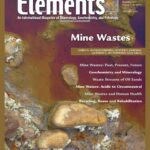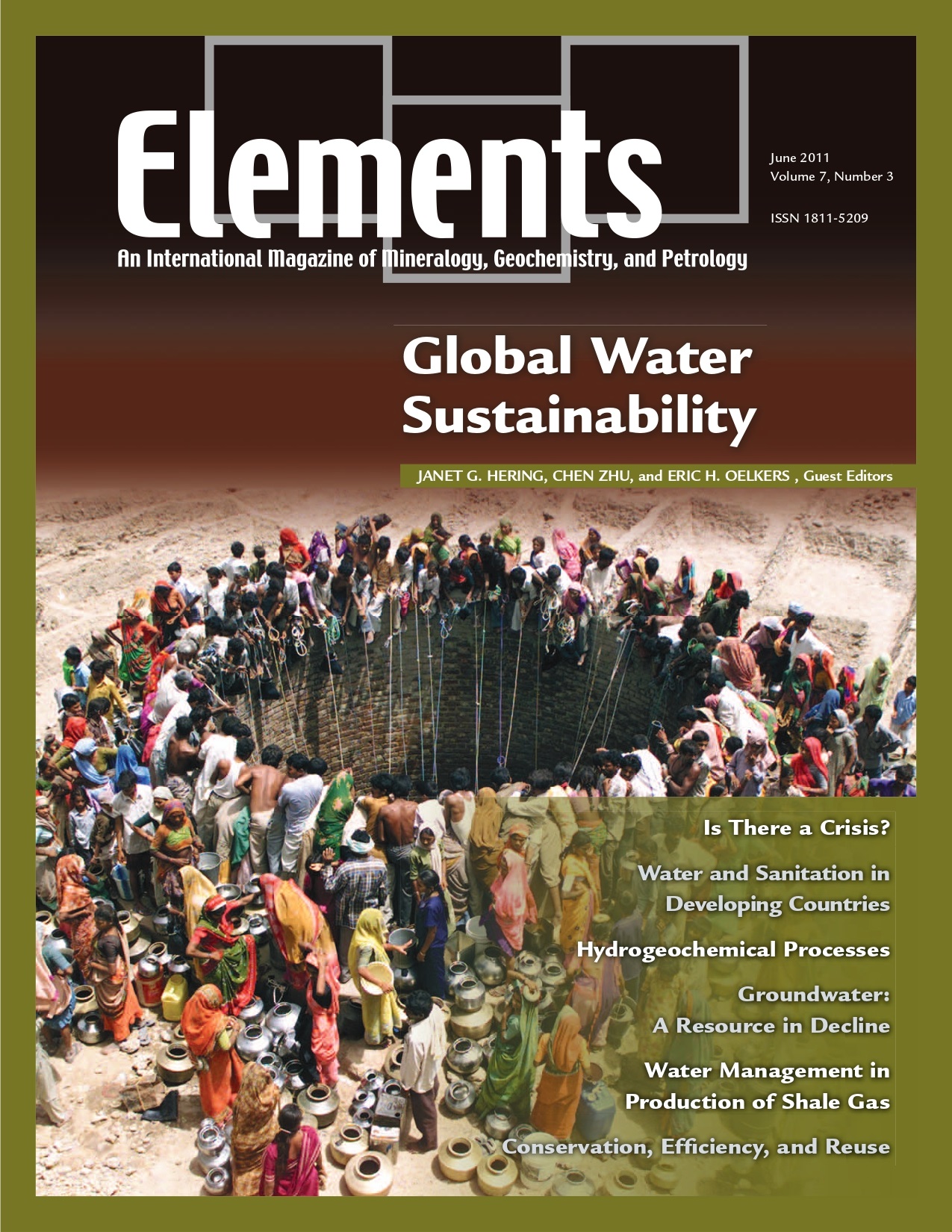
Sustainable Remediation Of Soils, December 2010, Vol. 6, No. 6
June 28, 2024
Mine Wastes, December 2011, Vol. 7, No. 6
June 28, 2024Global Water Sustainability, June 2011, Vol. 7, No. 3
$20.00
The term water resources refers to natural waters (vapor, liquid, or solid) that occur on the Earth and that are of potential use to humans. These resources include oceans, rivers, lakes, groundwater, and glaciers.
Global Water Sustainability
June 2011, Vol. 7, No. 3
The term water resources refers to natural waters (vapor, liquid, or solid) that occur on the Earth and that are of potential use to humans. These resources include oceans, rivers, lakes, groundwater, and glaciers. The Earth has plenty of water, over 1.4 × 109 km3. However, 97% of global water is saline sea water. Of the 3% that is freshwater, nearly 70% is locked in the polar icecaps and glaciers. The majority of non-glacier freshwater is groundwater (98%). Surface freshwater (rivers and lakes), which has historically served most human needs, constitutes only a small fraction of the Earth’s water resources. Water interacts with minerals, soils, sediments, and rocks, and hence studies of Earth materials have a direct bearing on water resources. Studies of the acquisition, mobility, and fate of elements and isotopes in water provide valuable sig natures for tracking water cycles at regional and global scales and are essential for the development of remediation technologies for contaminated water.
Why You’ll Love Elements Magazine:
- Expert Contributors: Articles written by renowned researchers in the field of geoscience.
- Engaging Content: Join a community of readers who are passionate about Elements.
- Exceptional Quality: Each issue is printed on high-quality paper with stunning visuals and detailed illustrations that bring complex scientific concepts to life.
Order your copy of the June 2011 issue of Elements magazine today and investigate global water sustainability.
Related products
-
Arsenic, April 2006, Vol. 2, No. 2
$20.00Arsenic is an element known throughout history as a classic poison. Currently, very small but highly significant concentrations of this element in drinking water supplies are causing massive health problems to many millions of people in some of the world’s poorest nations, and more localised sources related to mining and processing are also a concern.
-
Medical Mineralogy And Geochemistry, December 2007, Vol. 3, No. 6
$20.00Medical mineralogy and geochemistry is an emergent, highly interdisciplinary field concerned with both normal and pathological interactions between minerals or amorphous inorganic solids and biomolecules or cells within the human body, and the transport and fate of prions and protein toxins in the soil environment. Prior research has, appropriately, focused on the complex genetic and molecular biological aspects, but there is a growing recognition of the vital need for understanding the surface and bulk properties and reactivities, especially at the challenging nanoscale characteristic of biomacromolecules and biominerals.
-
On The Cutting Edge: Teaching Mineralogy, Petrology, And Geochemistry, April 2007, Vol. 3, No. 2
$20.00New advances in research on learning have important implications for teaching mineralogy, petrology, and geochemistry. Effective instructional practices are increasingly student centered, address diverse student learning styles, and employ a variety of active-learning strategies.




